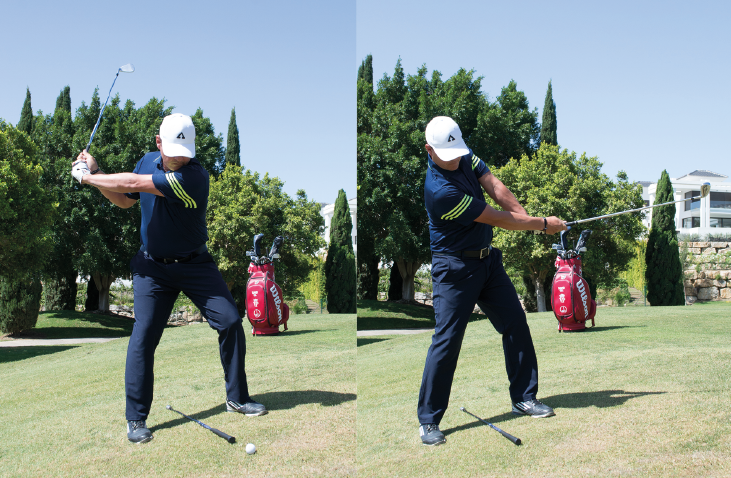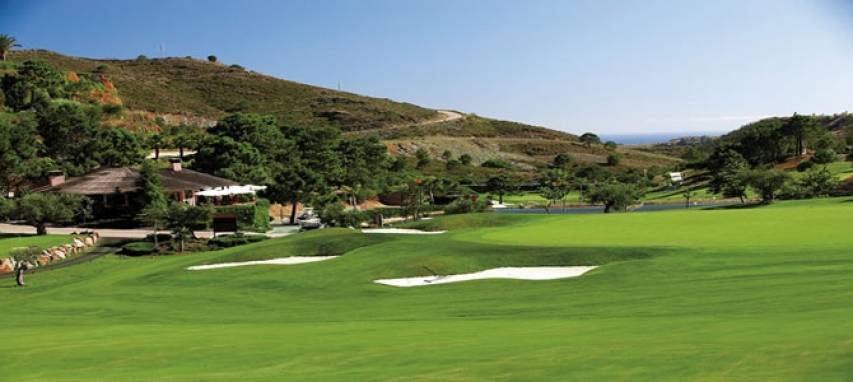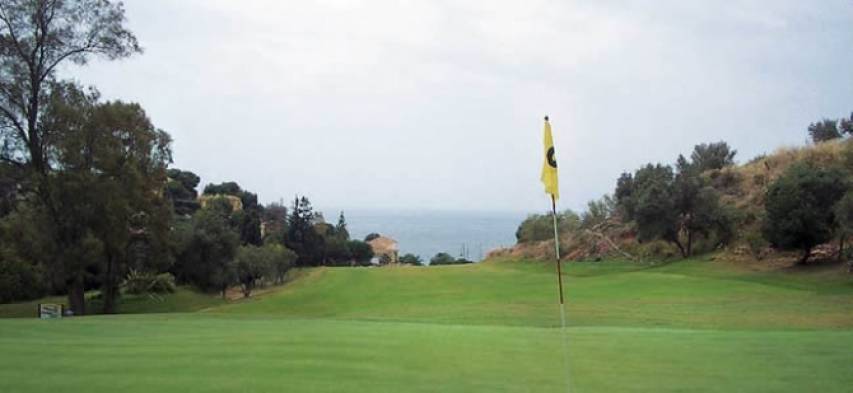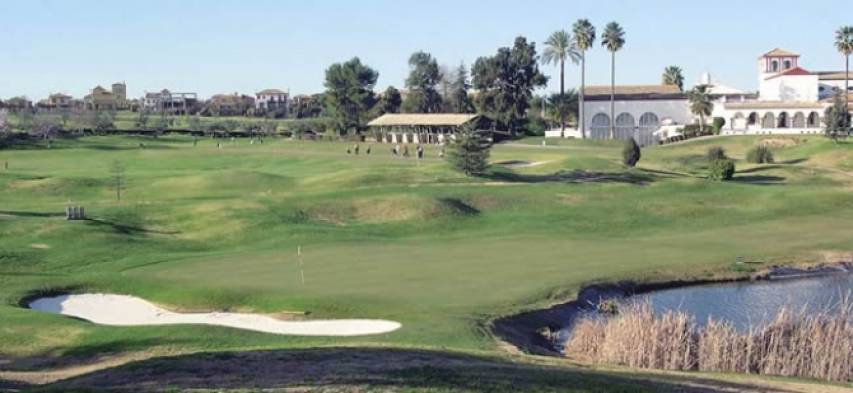David Gil was 19 when, in 1988, he started working as a golf professional in Almenara (Sotogrande), creating the first CAR academy in Andalucía.
He subsequently travelled to England where he worked at the David Leadbetter Academy. On his return, he created the Sotogrande Junior Golf School, where players who went on to become top professionals have been coached.
Always linked to education, in 2010 he became involved in an international project in Sicily, where he was closely associated with Italy’s national teams and coaches.
With a masters degree in management and golf course management, David worked in golf operations for Andalucía’s leading courses until, in 2018 the Villa Padierna opportunity arose. The “TGA Golf Academy by Michael Campbell” is a vibrant project that is growing day by day, and currently is recognised as among the best golf academies in Spain.
Shots Hit from a Sloping Lie
One of the most common comments among a group of golfers is the following: "On the practice range I hit the ball really well, but when I go out on the course it’s not the same."
It is true that there are many factors that can cause this to occur, However, above all else is the fact that the ball is not always at the same height as our feet, as it would be on the driving range, and this can greatly influence the resulting shot.
In the first part of this article (published last issue) dealing with shots hit at different heights, we talked about how to create a good stance and a good swing when the ball is positioned higher or lower than our feet.
In this second part I will try to help you manoeuvre shots with the ball at the same height as your feet, but on descending and ascending slopes.
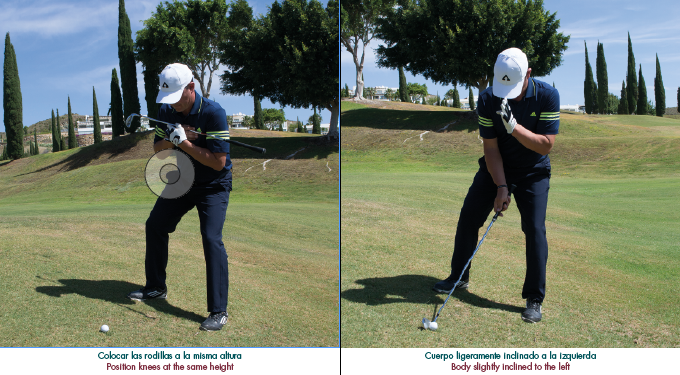
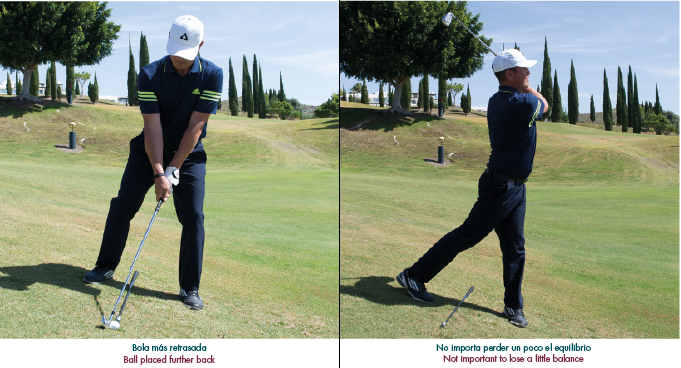
Shots on Descending Slopes
This shot usually creates a lot of insecurity for players from the moment they find their ball in that situation, but I’m sure this lesson will help you.
Stance
The first thing you have to be clear about is that you should place ourselves in front of the ball in a natural way, respecting the angle of the slope and never looking for a stance that is similar to when you hit from flatter areas.
- On a downward slope, the left part of your body is lower than the right, so bending the right leg more will help stabilise you, as both your knees will be at the same height.
Weight
As I noted above, don’t try to balance your body by setting up in a position similar to a shot from flat ground. The weight should be on your left, with the body slightly inclined towards that side. This is the best way to create a good angle of attack.
- Ball Position
Slightly behind, between the centre and your right foot. From there you will always have better options to generate a solid impact.
- Stability
The main cause of mistakes with these shots is that instinctively many players – when they lower the club and feel that the weight is shifting rapidly to the left – try to compensate by slowing the movement and moving to the right so as not to lose their balance, and consequently hit over the ball.
The correction is easy and clear. In this case it doesn’t matter if you lose your balance slightly – hit with the weight on the left side, and nothing adverse will happen if you move a little forward.
- The Club
In this case, the ball comes out stronger and lower. This will make the shot longer than what you would normally hit from a flat area, so a club you use for shorter distances will be the correct one.
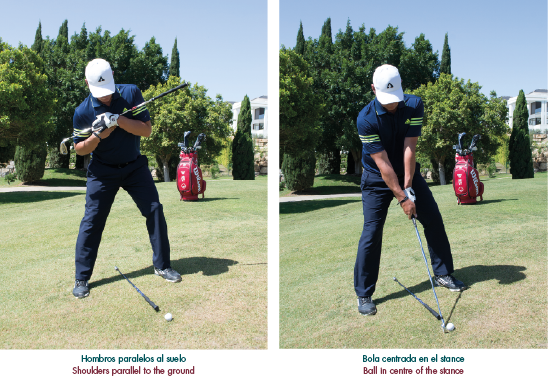
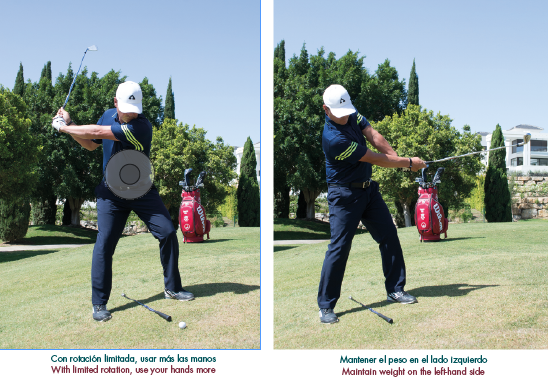
Shots on Ascending Slopes
Stance
For these shots it is also very important to adjust your body to the slope. You should aim for the shoulders to be parallel to the surface and for your left leg to be slightly more bent than the right one. This will align the knees and help you achieve a more solid stance.
The opening between your feet will be a little greater than for a neutral stance (the one you usually use for shots from flat ground). If you do this you will have an extended base and better stability.
Weight and Rotation
You should always keep the weight slightly on the left side, but never try to move forward (don’t lean your body), if you want to prevent the club from becoming stuck on impact.
Rotation is very complicated in this situation, so I recommend releasing your hands a little more than normal before impact. The idea is to compensate for the lack of rotation.
Ball Position
In the previous point I noted that freeing the hands will compensate for a lack of rotation, but it also helps you close the club earlier. That is why you should never position the ball too far forward in the stance. It is advisable to centre it and thus avoid hitting a hook shot.
The Club
In this case – and depending on the degree of inclination of the slope – the ball will come out much higher than usual, and travel a considerably shorter distance, thus making it necessary for you to play up to three clubs more. Bear this in mind and always play clubs that you would use for longer distances.



